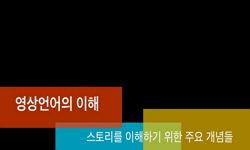Stenka Razin is a person who led the peasant’s uprising in 17th century Russia. His story was sung among Russians for a long time, and coming into the modern era it started to spread throughout the East Sea Rim region. There has been two media fo...
http://chineseinput.net/에서 pinyin(병음)방식으로 중국어를 변환할 수 있습니다.
변환된 중국어를 복사하여 사용하시면 됩니다.
- 中文 을 입력하시려면 zhongwen을 입력하시고 space를누르시면됩니다.
- 北京 을 입력하시려면 beijing을 입력하시고 space를 누르시면 됩니다.

근대 환동해지역과 스텐카 라진 서사 = The Story of “Stenka Razin,” and the East Sea Rim in the Modern Era - The Internal Design of Romance tales, and the role of the Media -
한글로보기https://www.riss.kr/link?id=A99654272
- 저자
- 발행기관
- 학술지명
- 권호사항
-
발행연도
2013
-
작성언어
Korean
-
주제어
스텐카 라진 ; 환동해지역 ; 볼가 ; 내러티브 ; 무성영화 ; Stenka Razin ; East Sea Rim ; Volga ; narrative ; silent movie
-
KDC
910
-
등재정보
KCI등재
-
자료형태
학술저널
-
수록면
5-23(19쪽)
- DOI식별코드
- 제공처
-
0
상세조회 -
0
다운로드
부가정보
다국어 초록 (Multilingual Abstract)
There has been two media for this Stenka Razin narrative: one was an auditory media, the songs, and the other was a visual media, which was the movies. In Russia, the song was sung first and then they turned into a movie, but in the East Sea Rim region the order was reversed, because in the region at the time silent film was establishing itself as a new form of popular culture.
But there is a distinct difference between the narratives carried by these two media. There is the death of a Persian prince inside the Stenka Razin tale. In the song of 〈Stenka Razin〉 that was popular in Korea roughly 30 years ago, mentions of this Persian princess" death are missing. But in the original folklore and folk songs of Russia, this princess" death is included.
The poem of Sadvnicov which was used in the background music of the 1908 movie served as the template of the popular song that circulated in Korea and Japan. Among the three movies mentioned above the one distributed in the East Sea Rim region was the 1928 movie 〈Wolga-Wolga〉. According to the synopsis and the voice recording of speaker(弁士), unlike other incarnations in which the princess is just thrown into the river, Stenka Razin “kills and throws” the princess himself in the 1928 movie.
The Persian princess falls in love with the leader of their abductors, Stenka Razin(which is a doubtful state of affairs considering the circumstances) and in the end was thrown into the river by Razin as well. The Korean press in the 1930s praised this story, calling it the ultimate romance(熱血로맨스). The reason that an act of throwing a woman whom he loved into the river was praised as a romantic act, was because the princess was a existence brought the weakness of the Cossack resistance and also because she was conceived as the daughter of an enemy state. This narrative is by nature from an Imperialistic or state-based point of view, and it also had the element of ‘deceived by a girl (여자에 속아서).’ This narrative continues to exist even in the 2000s.
Stenka Razin is a person who led the peasant’s uprising in 17th century Russia. His story was sung among Russians for a long time, and coming into the modern era it started to spread throughout the East Sea Rim region.
There has been two media for this Stenka Razin narrative: one was an auditory media, the songs, and the other was a visual media, which was the movies. In Russia, the song was sung first and then they turned into a movie, but in the East Sea Rim region the order was reversed, because in the region at the time silent film was establishing itself as a new form of popular culture.
But there is a distinct difference between the narratives carried by these two media. There is the death of a Persian prince inside the Stenka Razin tale. In the song of 〈Stenka Razin〉 that was popular in Korea roughly 30 years ago, mentions of this Persian princess" death are missing. But in the original folklore and folk songs of Russia, this princess" death is included.
The poem of Sadvnicov which was used in the background music of the 1908 movie served as the template of the popular song that circulated in Korea and Japan. Among the three movies mentioned above the one distributed in the East Sea Rim region was the 1928 movie 〈Wolga-Wolga〉. According to the synopsis and the voice recording of speaker(弁士), unlike other incarnations in which the princess is just thrown into the river, Stenka Razin “kills and throws” the princess himself in the 1928 movie.
The Persian princess falls in love with the leader of their abductors, Stenka Razin(which is a doubtful state of affairs considering the circumstances) and in the end was thrown into the river by Razin as well. The Korean press in the 1930s praised this story, calling it the ultimate romance(熱血로맨스). The reason that an act of throwing a woman whom he loved into the river was praised as a romantic act, was because the princess was a existence brought the weakness of the Cossack resistance and also because she was conceived as the daughter of an enemy state. This narrative is by nature from an Imperialistic or state-based point of view, and it also had the element of ‘deceived by a girl (여자에 속아서).’ This narrative continues to exist even in the 2000s.
목차 (Table of Contents)
- Ⅰ. 서론
- Ⅱ. 스텐카 라진의 반란
- Ⅲ. 환동해지역, 〈스텐카 라진〉서사가 잊었던 것
- Ⅳ. 환동해 지역의 영상매체와 스텐카 라진 서사
- Ⅴ. 근대 환동해 지역, 로맨스의 문법과 젠더
- Ⅰ. 서론
- Ⅱ. 스텐카 라진의 반란
- Ⅲ. 환동해지역, 〈스텐카 라진〉서사가 잊었던 것
- Ⅳ. 환동해 지역의 영상매체와 스텐카 라진 서사
- Ⅴ. 근대 환동해 지역, 로맨스의 문법과 젠더
- Ⅵ. 근대환동해지역 무성영화와 상영문화(변사의 존재)
- Ⅶ. 결론
- 참고문헌
- 【논문초록】
동일학술지(권/호) 다른 논문
-
- 동북아시아문화학회
- 禹在?(Woo, Jae-Ho)
- 2013
- KCI등재
-
- 동북아시아문화학회
- 손동주(Son, Dong-Ju)
- 2013
- KCI등재
-
- 동북아시아문화학회
- 노혜경(Roh, Hye-Kyung)
- 2013
- KCI등재
-
환동해 ‘변방’ 담론을 통해 본 근대 공간 정치와 그 역설
- 동북아시아문화학회
- 신진숙(Shin, Jin-Sook)
- 2013
- KCI등재




 KCI
KCI DBpia
DBpia






